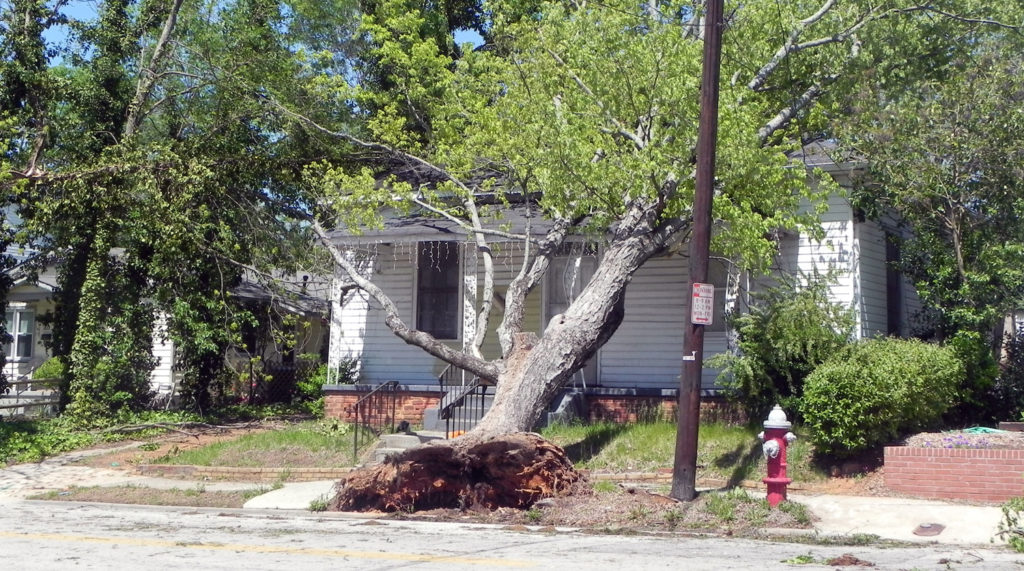There are times when a tree is dead or dying and you’ll need to have it removed. Other times, it may just need a good pruning. As a general rule, trees should be at least 20 feet away from any structures. However, there are also situations where a tree doesn’t need to be removed. In these situations, it may serve a beneficial purpose by providing a home for wildlife.
Do you have to remove a tree if it’s too close to a house?
When a tree grows too close to a house, its roots and canopy can potentially cause damage. However, removal is not always necessary. Proper pruning and maintenance can minimize the risk of damage. For example, keeping a tree no closer than 15 feet to a home is a good idea.
If a tree is growing too close to a house, you must consult with a professional to determine whether the tree is safe or not. Trees near houses can become weakened by weather, pests, or even structural damage. Considering these hazards, you should consider hiring a professional to remove the tree. For more info visit https://www.escondidotreeremovals.com/.
Although trees near homes are usually beautiful, they can pose many safety risks. A tree with overhanging branches can damage a roof or ruin the foundation. In addition, branches may fall and cause injury or even death. Trees that are too close to a house can also pose a risk to wildlife.
Fortunately, the process of removing a tree is usually simple. In most states, tree removal professionals can be called and scheduled without much trouble from local officials. However, there are some states and cities where tree removal may require special permissions or permits. These may be required by local ordinances or preservation laws.
When you are considering removing a tree, make sure to consult a certified arborist. Certified arborists know how to prune tree branches safely, and can provide you with professional advice on tree care.

Does it need to be removed if it’s dead or dying?
Most local cities have laws protecting trees and preserving their canopy cover. However, you should not cut down a dead tree unless you have council permission first. This is because a dead tree can be dangerous, as it can fall on a power line or cause a power outage. In addition, dead branches can cause injury to people nearby.
To determine whether a tree is dead or dying, look for changes in color. While a green color indicates a healthy tree, a brown hue indicates it’s dead or dying. A professional arborist can assess the situation and determine the best course of action. If a tree is close to a building or property, it’s best to have it removed.
A tree may be dead or dying if it shows signs of disease or nutrient deficiency. This is typically accompanied by a lack of growth, or rotting near the trunk. This could also indicate pest activity or damage from landscaping or construction.
Besides providing aesthetics, trees also provide shade, shelter, and shade to other plants and wildlife. However, when a tree becomes unhealthy, it could have holes or be a target for insects such as beetles and ants. In extreme cases, these insects and diseases can cause irreparable damage to the tree. In these cases, a tree needs to be removed as soon as possible.
Does it need to be removed if it’s hanging over a roof or overhanging a power line?
If your tree is overhanging a power line or roof, you may need to have it removed. In Massachusetts, it is illegal to prune a tree within 10 feet of a power line, and this is a danger because it may interrupt the power source. In addition, you are responsible for maintaining the health of your trees, and it is essential to avoid interfering with service lines. It is often best to hire a tree service to safely prune trees and keep the roof and line clear.
Trees should be planted at least six feet away from power lines. You should also avoid planting a tree right beneath power lines, as it could block access to the lines or grow tall enough to overhang the lines. You should also pay attention to the maximum height of the tree, as some varieties reach more than 100 feet at maturity.
It is also important to keep the tree away from the house, and branches hanging over the roof can lead to a fire or even damage the roof or walls. Branches can also clog gutters and can lead to overflow, which can lead to rotting siding and foundation.
If you’re unsure of whether or not a tree needs to be removed, consult your insurance agent. Many policies have exclusions and requirements for trees that are too close to power lines.
